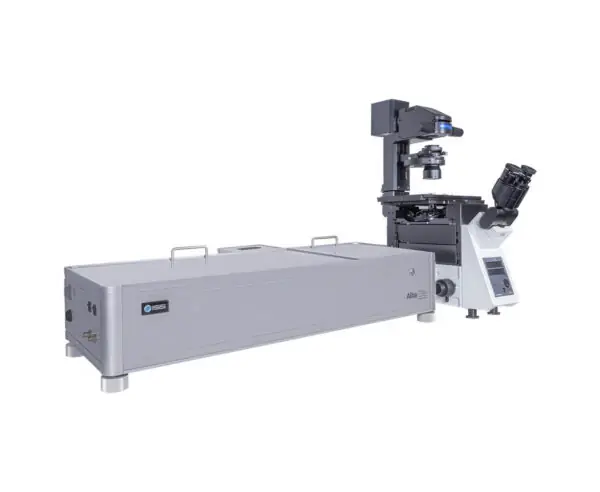The Confocal microscope for material analysis PL1 was specifically developed for materials science and offers the highest sensitivity down to the single-molecule level. It enables quantitative imaging and analysis of materials such as semiconductors, solar cells, and crystals. The system delivers a spatial resolution of up to 250 nm and a spectroscopic resolution of 0.05 nm, allowing even the finest material structures to be precisely investigated.
Thanks to a wide excitation wavelength range from 266 nm to 1000 nm, the PL1 is suitable for a wide range of photoluminescence characterization applications. Furthermore, the microscope offers large-area scanning capability of up to 100 mm², allowing for efficient analysis of large-area samples. Finally, the modular platform allows for easy expansion with AFM and Raman spectroscopy for comprehensive material analysis.
Technical highlights for maximum precision
The PL1 confocal microscope It boasts a wide range of technical features that make it a powerful tool for materials scientists. It enables lifetime measurements in the range of 100 ps to 100 ms and spectroscopic detection from 300 nm to 1700 nm. It also offers high-precision fluorescence fluctuation spectroscopy (FCS, FCCS, FLCS, PCH) for detailed analyses at the molecular level.
The integrated FastFLIM technology enables the generation of high-resolution 3D lifetime maps. Furthermore, the automatic control of apertures, filters, and shutter systems enables maximum productivity and reduced measurement time. Finally, the VistaVision software facilitates data analysis with phasor plots, FRET analyses, and spectral separation of material components.
Areas of application in research and industry
The PL1 confocal microscope for material testing is the ideal solution for a wide range of applications in materials research. It is used to investigate semiconductor materials to analyze their optical and electronic properties. It is also ideal for characterizing solar cells and photovoltaic materials to optimize their efficiency. Furthermore, it is used to analyze crystal structures and nanomaterials to precisely determine their composition and defects. Finally, chemical and biomedical research also benefit from the ability to examine material surfaces at the molecular level using fluorescence imaging.
Contact
Do you have any questions about PL1 or do you need individual advice for your application? Please feel free to contact us – our team of experts will help you find the optimal solution for your requirements.





